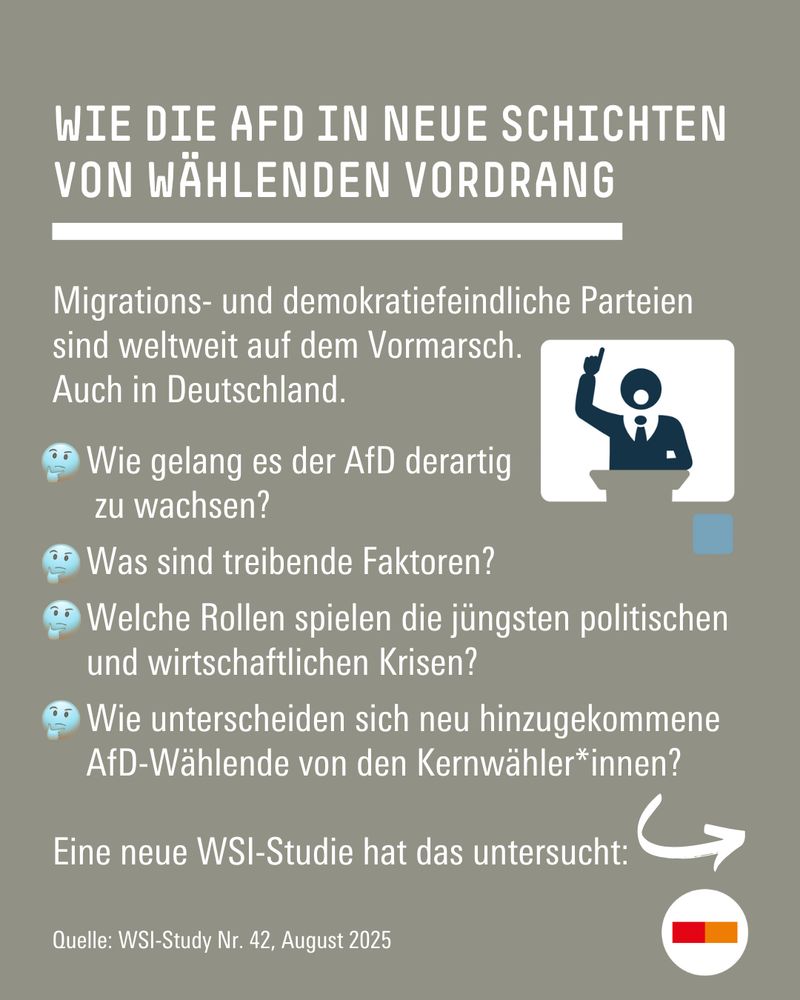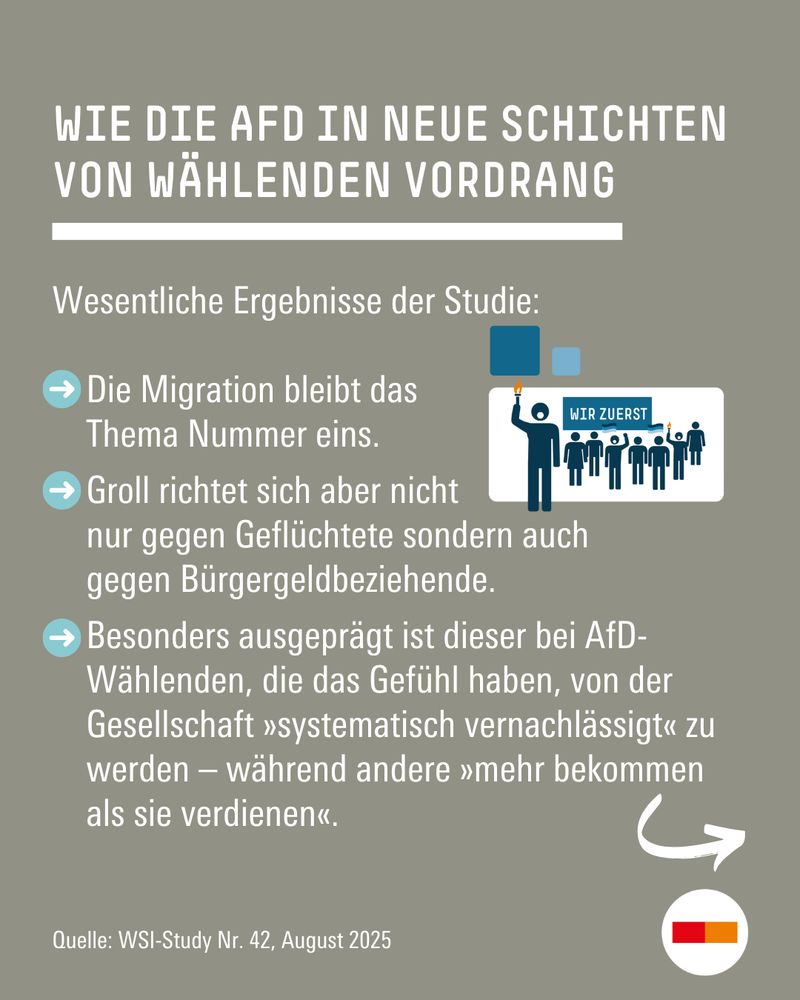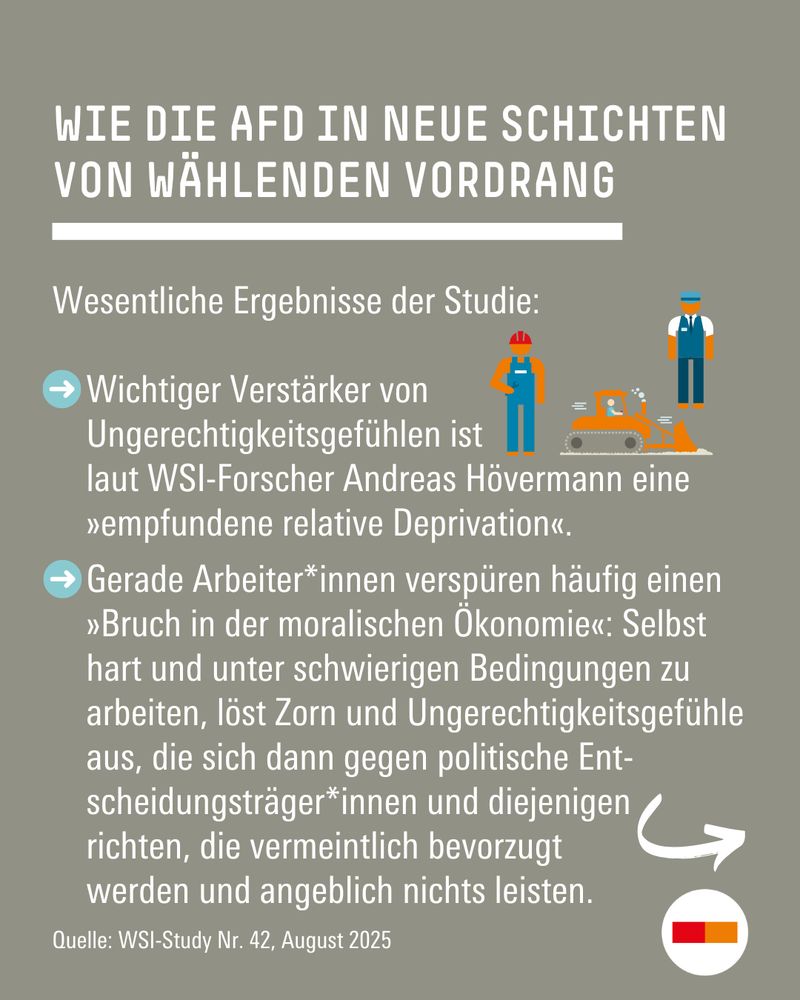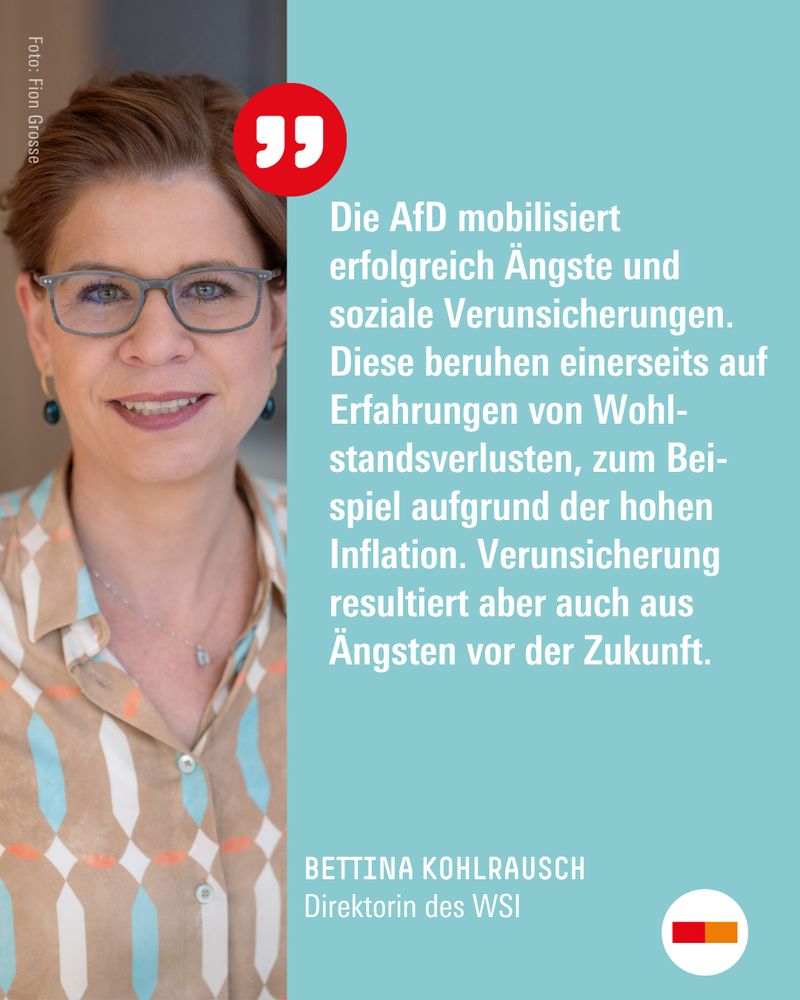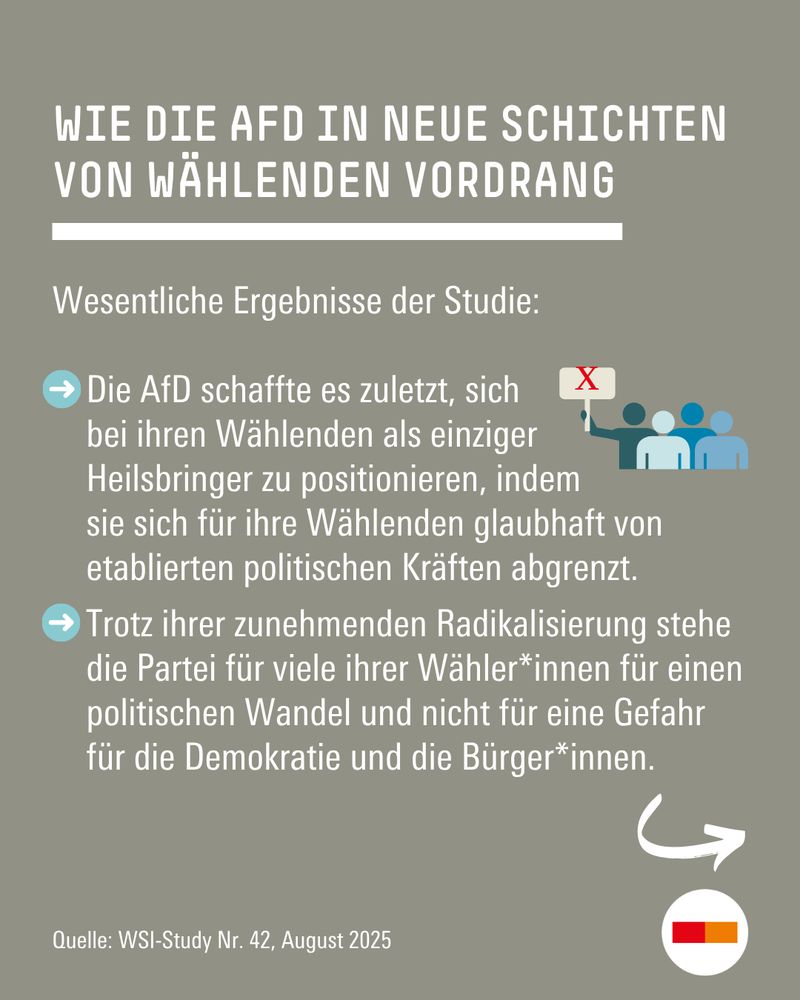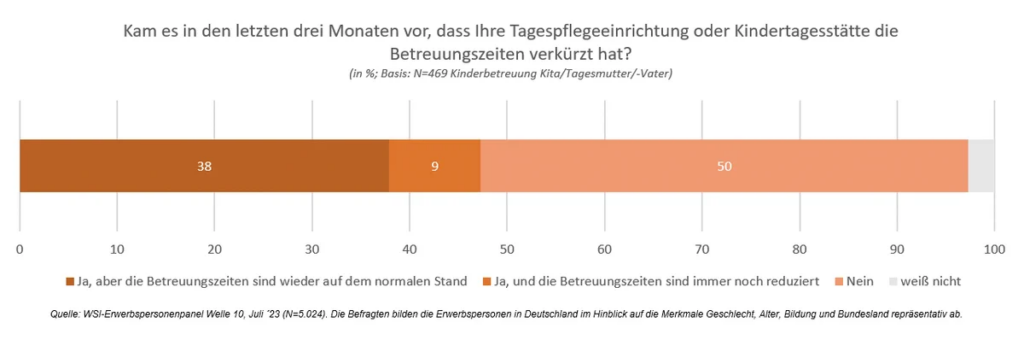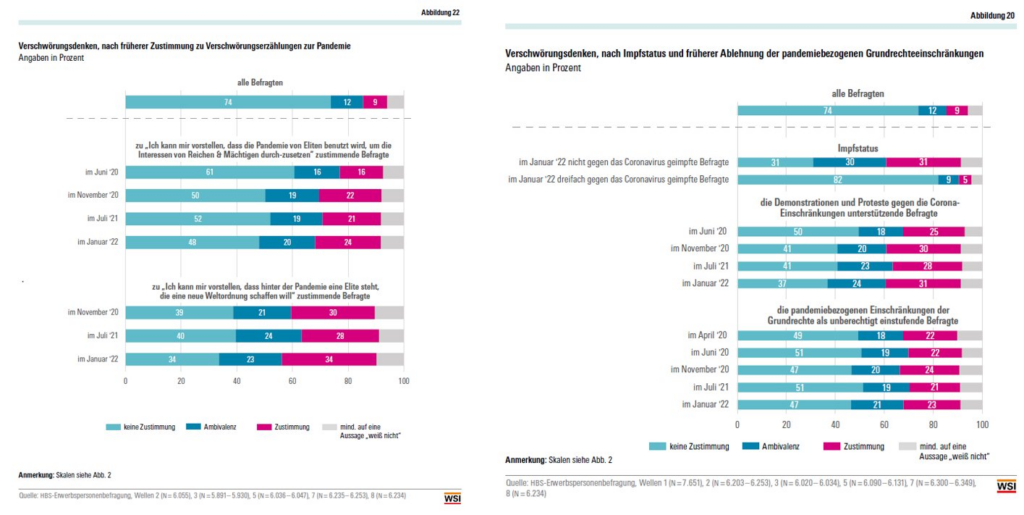These questions are addressed using data from the WSI Labor Force Panel (10 waves, Apr 20-Jul 23, N= 7,500-5,000) in my detailed report published today.
Who is disproportionately found among AfD voters?
🔵 Men, rarely high education; 30-49 years; lower, middle income
🔵 Highly worried (both financially and socially) and highly strained
🔵 very low institutional trust – especially in Federal government and public media
However, the trust of AfD voters in the AfD can be classified as relatively high. 48% of those who said they would vote for the AfD in July ’23 expressed “high”/”very high” trust in the AfD (only exceeded by the Green voters). ➡️ many convinced AfD voters
At the same time, the proportion of AfD voters with low trust in AfD is similar to that of other parties. These values do not suggest a particularly large number of protest voters, who vote for the AfD without agreement or conviction in terms of content.
Which issues were particularly important to AfD voters shortly after the ’21 federal election? For some issues, there is a great similarity to voters of other parties: job creation and job security, improvement of the care situation, infrastructure investments are all classified as important.
But what were the biggest differences in the assessment of importance between AfD voters and voters of other parties? Limitation of immigration! 95% of current AfD voters mentioned this as an important issue directly after the federal election ´21 (55% of voters of other parties).
In addition, there are very critical, negative, and pessimistic attitudes towards refugees from Ukraine among AfD voters: for example 76% approval in Nov ́22 on “Refugees from Ukraine should join the end of the queue here in Germany for now” (31% voters of other parties)
Conspiracy myths about the pandemic, but also about the Ukraine war, also gained more support among AfD voters. It is also worth noting that half of AfD voters agree with the alternative interpretation of war guilt “NATO provoked Russia to this war” (14% among voters of other parties).
There are also striking differences in terms of experiences in the work context: AfD voters are less likely to report good working conditions. The difference in appreciation and recognition seems particularly relevanz. Only 42% of AfD voters consider their salary to be adequate.
But what can be said about the increase in voter support for the AfD in ’23? To do this, I focus on “AfD new voters” – those who stated in July ’23 for the 1st time that they wanted to vote for AfD and distinguish them for instance by “AfD regular voters” who never stated anything other than voting for AfD.
From a socio-demographic point of view, it is striking that a lot have been reached recently, which haven´t been reached before that strongly: more women than before (but still less than average), less middle-aged, more with middle-upper incomes, more with financial reserves.
Trust in institutions is also low among new AfD voters, especially in the government and the public media. It can be traced how this group has been losing more and more trust over the last 2 years. Most recently, 89% expressed low confidence in the federal government.
Remarkably, however, new AfD voters tend to have rather little trust in the AfD (I might want to add “so far”). Among them, there are more unconvinced (30%) than convinced (20%) voters. The picture among AfD regular voters is quite different, 71% of them express great confidence in the AfD.
Indications as to why new AfD voters would (nevertheless) opt for the AfD are provided by findings on topics that were important to new AfD voters at the federal election ´21: The issue of limiting immigration was also assessed as important among the vast majority of them (87%). However, there was less agreement on other topics (climate change, role of EU).
New voters of the AfD are also proving to be highly strained and worried. It is worth mentioning that they were consistently heavily strained financially during the last years. However, their view on society was much more positive in ’20 and ’21 and only became overcast massively in ’22.
Their perspective on the pandemic was initially even more positive and cooperative among AfD new voters (e.g. higher vaccination rate), but crumbled in ’22. Among new AfD voters, however, critical, negative, and pessimistic attitudes towards Ukraine refugees are also widespread.
What does the voting migration analysis show? Looking at what respondents voted for in the 2021 federal election, it can be seen that 39% of respondents who said they would vote for the AfD in July ’23 did so already in the federal election almost two years before.
However, another 45% of current AfD voters voted for another party at the federal election. Among them, above all, parts of the 🚥 (FDP, SPD), as well as CDU/CSU. Looking at the voting preference in between (in Nov ́22), it can be seen that the SPD’s losses occurred mainly in the 1st year after the start of the government.
On the other hand, losses for the CDU/CSU took place mainly last year. A third of the current AfD new voters previously stated in Nov ’22 that they wanted to vote for the CDU/CSU. For the AfD’s recent major gains, migration from the CDU/CSU thus appears to be much more relevant (#Mainstreaming effects).
To conclude: AfD relies on enormous dissatisfaction and mistrust in government – here AfD voters are very approachable. AfD has also recently caught on with the highly strained and highly worried; among those who feel the very homogeneously conceived societal cohesion very much threatened by immigration.
The AfD’s new voters were already heavily financially burdened before; however, the particular extent of the burden in the high-inflation phase ’22 and the simultaneous presence of the refugee debate (successful AfD agenda-setting) seem to be decisive for many, because (also this) report clearly shows that those who vote for the AfD do so not in spite of, but because of their anti-immigrant positions – this also applies to the new AfD voters.
AfD only as a protest vote? The relatively high level of trust among their electorate tends to suggest differently.
Hope: among new AfD voters, many are not convinced of AfD — > not so much agreement with other AfD positions (climate change, EU). These voters must be addressed with other than anti-immigrant positions. Not only do they contradict the principles of open democratic societies, they also poison the discourse, exacerbate social cleavages, and shift the boundaries of what can be said to the right, of which democratic parties also rarely benefit (see voter migration analysis).
They need to be approached with positions that are able to reduce their social and financial concerns. Good politics that tackle and solve problems and perceived injustices can ensure that people regain confidence in politics. If, however, public infrastructure often does not work or (affordable) housing is extremely scarce in many regions, creating real competition between natives and immigrants, if insufficient money is made available to successfully integrate immigrants, all this is grist to the mill for political actors who further foment distrust in democratic institutions and want to turn locals against immigrants.
Against this background, austerity policies, cutbacks in social security benefits and further delaying infrastructure spendings – in times of such political and social challenges – appear to be a very dangerous path.
see German version of this Thread with Figures here
The press release as well as the full report can be downloaded here
